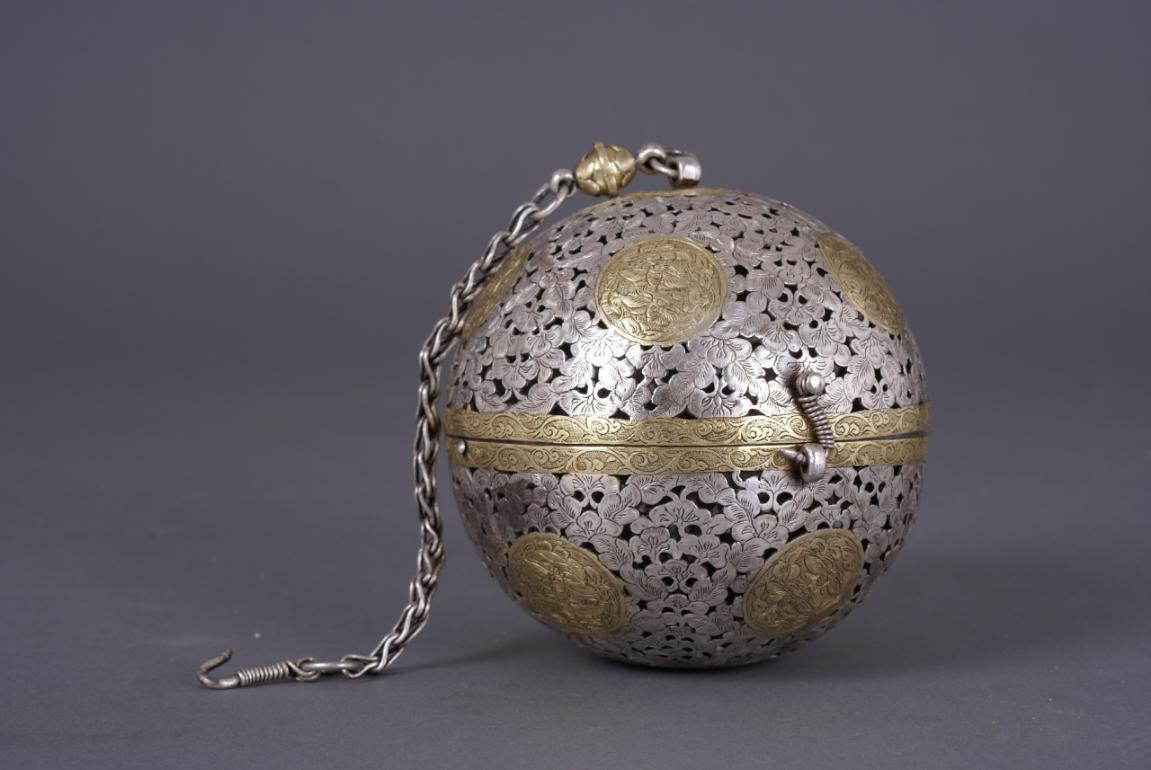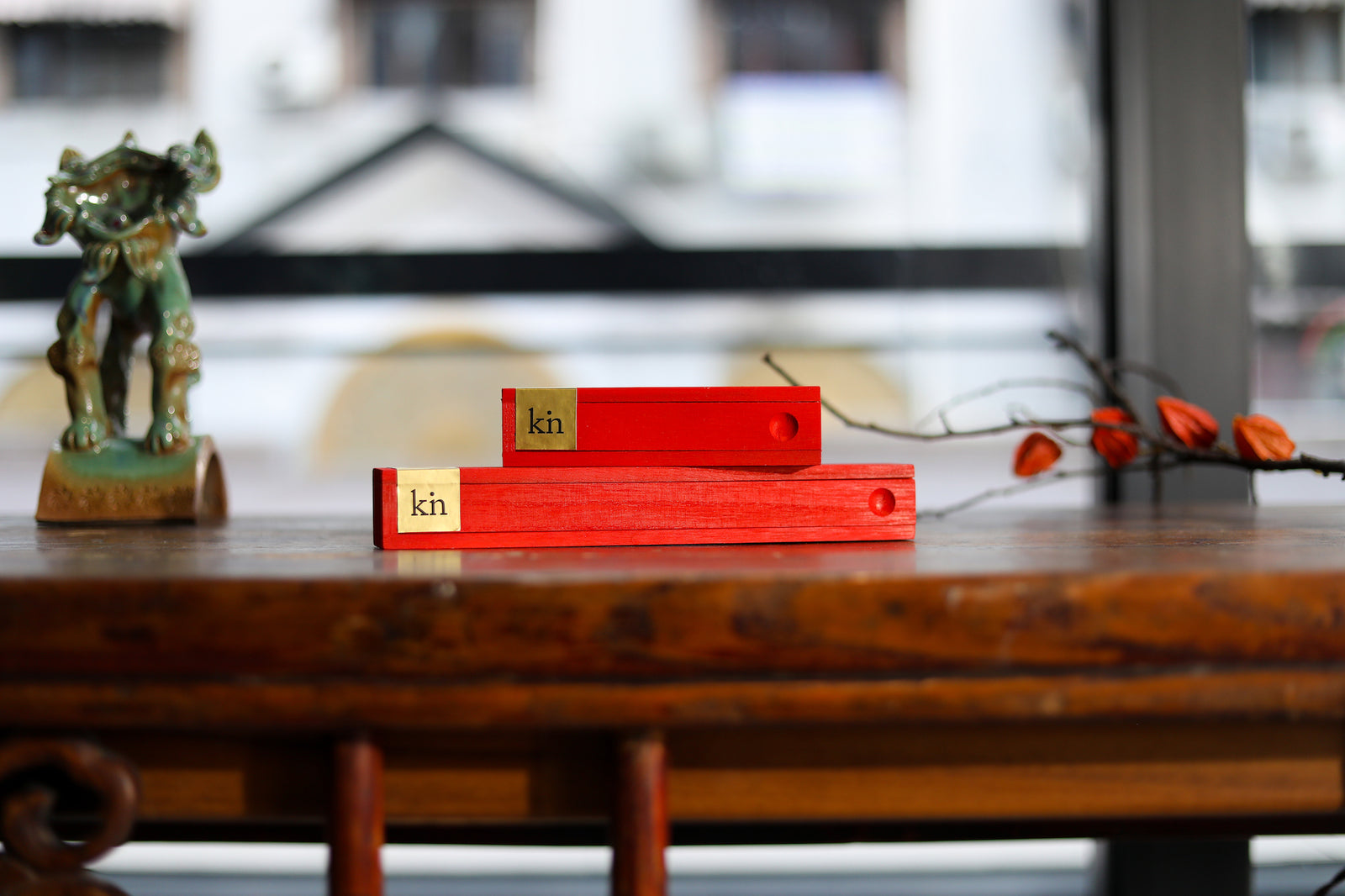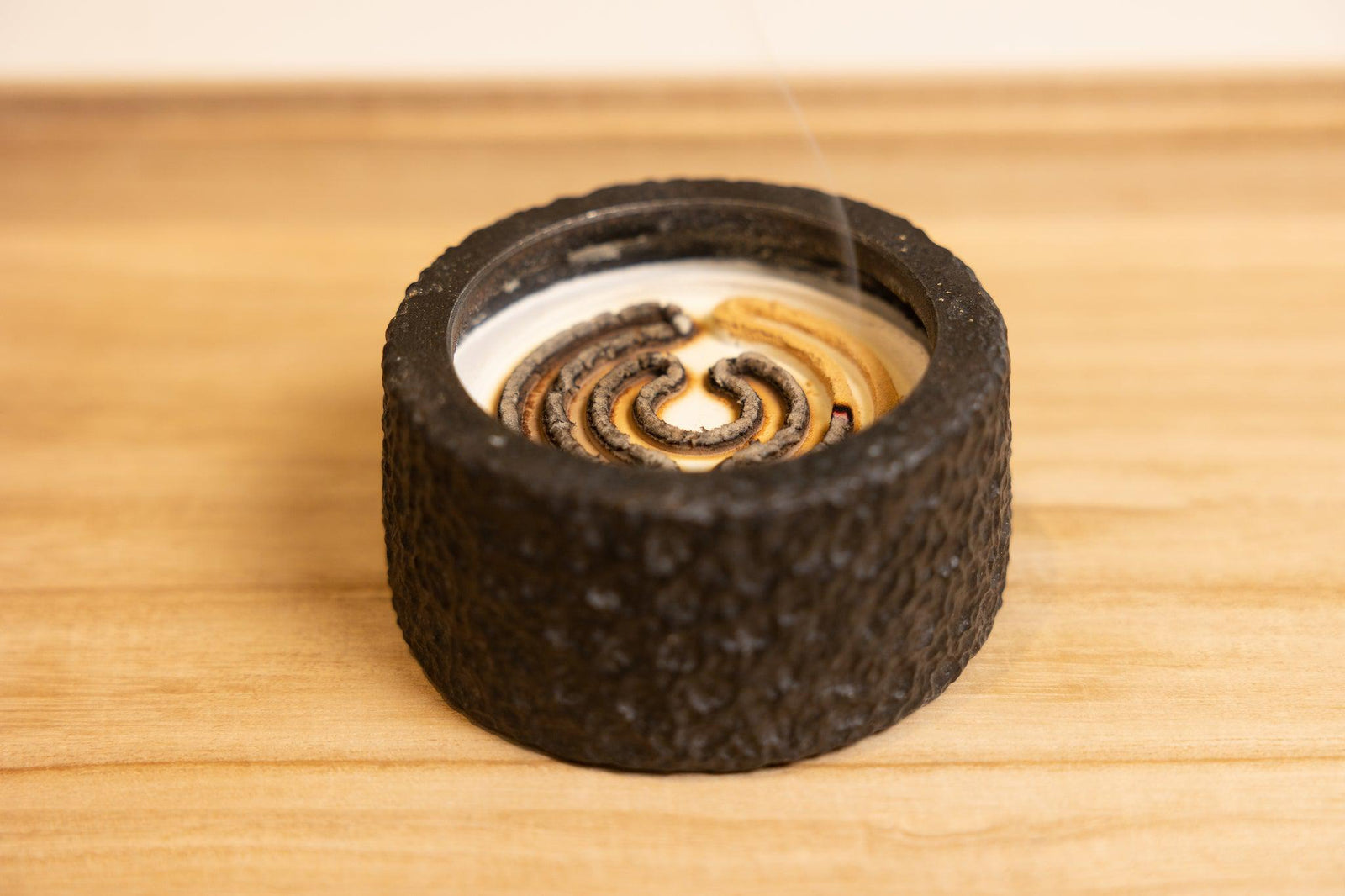Chinese incense truly blossomed in the Middle Ages, a golden age for Chinese civilization itself. Incense knowledge and use expanded exponentially, and it became an indispensable part of many rituals – from the most grand ceremonies to mundane daily undertakings.
As we’ve written before, traditional Chinese incense use actually has thousands of years of history, so we can only cover a small portion of it in this article – the use of incense leading up to and the early Middle Ages China (3rd to 10th centuries). For details on Chinese incense in the Neolithic period up to pre-Middle Ages, please refer to this article; for more details on the rest of the Middle Ages (Song and post-Song dynasties), please stay tuned for the next instalment.
Incense Development during the Three Kingdoms, Jin and the Northern and Southern Dynasties (~220 to 580,魏晋南北朝 / 魏晉南北朝)
After the end of the Han dynasty, China entered a pro-longed period of political turmoil, characterized by a lack of central government, and ruling by fragmented warlords. Imperial China was not to be united again for another 400 years. Yet the warring years saw a period of great cultural, artistic and philosophical development, as well as significant spread of Buddhism and Taoism. Incense use flourished in this environment.
Chinese Incense in Books from the 3rd to 6th Centuries
As the incense trade grew from the foundations established in the Han, incense trading markets began to be established in southern Chinese commanderies (日南郡, part of current day Vietnam). Incense ingredients also began to gain prominence in literature from the Three Kingdoms era (三国 / 三國) in the 3rd century. In fact, records indicate that blending incense (和香) had become already become widely practiced amongst users by this time.
For example, the book Peculiar Goods of the South States (《南州异物志》/《南州異物志》) by Wu Wanzhen (吴万震 / 吳萬震) of the Three Kingdoms dynasty had records of aloeswood, unguis odoratus, clove, frankincense and more; its notes on unguis odoratus describe that it is best used in combination with other incense ingredients as an enhancer, indicating that blends were already commonly used.
By the Northern and Southern dynasty (南北朝) in the 5th-6th centuries, the vast majority of incense ingredients known today had become available in China, and compilations of these ingredients as well as their characteristics had become available.

Although permanently lost, the index for《和香方》is cited in other books that remain today, for example the historical text Book of Song《宋书》
The most prominent incense book of this era is what many consider the first book wholly dedicated to incense in Chinese history - Blended Incense Recipes《和香方》written by a well known historian and politician Fan Ye (范晔 / 范蠡) in the Northern & Southern Dynasty, some time around year 430 CE. It is believed that the book goes into depth describing the characteristics of each incense ingredient, and how their various strengths and weaknesses could be utilized in blends. Unfortunately this book is now permanently lost, but citations of its content exist in latter incense books.
Chinese Incense Use in the Palace and Home from the 3rd to 6th centuries
Incense use in the palace was lavish and well documented in the pre and early Middle Ages period. The canonical text Readings of the Taiping Era (《太平御览》引《齐书》/《太平御覽》引《齊書》) records that at the end of the 5th century, the Marquess of Donghun (东昏侯/東昏侯,last Emperor of the faction Qi) had decorated his favorite concubine’s floor extravagantly with golden lotus, and painted her room with musk. The book of Chen (《陈书》/《陳書》), another annal from the era, records that the wife of Duke Yang of Changcheng (陈后主/陳後主, last ruler of the Chen faction), filled her residence with aloeswood and sandalwood moldings.
Besides the palaces, incense had also crept into the homes of society’s elite. Although because of their cost, it was still restricted to the most wealthy families. The Annals of Jin(《晋书 王敦传》/《晉書 王敦傳》) records that the prominent court attendant Shi Chong (石崇) displayed his wealth and status by having aloeswood water and unguis odoratus powder in his bathroom, handed to each guest by multiple ladies-in-waiting.
Chinese incense as part of Taoism and Buddhism
Taoism (Daoism, or 道教) entered a period of rapid development from the late Han dynasty through to the Northern Southern dynasty. A number of texts such as Yellow Court Classics《黄庭经》/《黃庭經》,Bao Puzi《抱朴子》, Zhen Gao《真诰》/《真誥》were completed during this period. By the Tang dynasty, Taoism had become well established and enjoyed special patronage by the Emperor, who claimed lineage from the founder of Taoism Laozi (Lao Tzu, 老子) . Similarly, Buddhism (佛教) also gained significant influence through the 2nd -6th centuries. Records show that by the 6th century, there were over 10,000 Buddhist monks in the city of Nanjing alone.
Incense use had long been associated with both religions. In Taoism, incense is believed to enhance emotional wellbeing, protect from illnesses and evil spirits, and aid the journey to enlightenment. Similarly, incense is used in many Buddhist practices. The scents are believed to play an important role in harmonizing emotions, and so an incense is often lit as an accompaniment for chanting and meditation. The use of incense therefore gained further momentum in Chinese society along with the spread of Taoism and Buddhism.

The Height of Chinese Incense: Sui and Tang Dynasties (581-907,隋唐朝)
The Tang dynasty (together with the brief, preceding Sui 581-618) is considered by many to be the golden age of Chinese civilization. The Tang capital Chang’an (today Xi’an, 西安) was in fact the most populous city in the world at the time. With a strong economy and a well run army as the base, Tang was a prosperous dynasty that extended its influence afar with both land conquests and cultural influence. Art, music, poetry flourished, and along with them, incense.
Origins of Japanese Incense
It is widely believed that incense was introduced to Japan by Chinese Buddhists in the early 6th century. However the first formal record of incense in Japan was during the Tang dynasty (595), where a log of aloeswood/ agarwood, drifted ashore on Awaji Island and was presented to Prince Shōtoku and the Empress Suiko.
Over the subsequent centuries, Chinese incense practices spread across the ocean as the Japanese adopted many incense rituals of the Tang court. These, along with significant influences from the succeeding Song dynasty, formed much of the basis of the Japanese incense culture.
International Incense Trading in the Tang Dynasty
The significant International trade that had begun in the Han dynasty gained momentum in the Tang. By this time, water routes had gained prominence in addition to the Silk Road, and Canton (Guangzhou, 广州/廣州 in southern China) became a significant port and an important international trading center in China. It is estimated that by the end of the Tang, hundreds of thousands of foreign traders from all over the world lived in Canton, including many Persians, Arabs, Jews, and many merchants from South and South East Asia. In fact, author of the book Herbs from Overseas《海药本草》Li Xun (李珣) was from a Persian family who had permanently settled in Sichuan. Along with the foreign traders, came an abundance of incense that supplemented growing domestic output.

A Fanfang (蕃坊)is where historically foreigners lived and traded from the Tang Dynasty to the Ming Dynasty. This is an old map of the Canton or Guangzhou fanfang. The Guangta Minaret in the upper right survives to this day, and is one of the earliest surviving Islamic buildings in China
Chinese incense use in the extravagant Tang palace from 6th to 10th centuries
Incense use became ever more lavish, along with the growing availability. The Sui and Tang palace was famed for its incense consumption. The canonical Chinese incense book 《香乘》(History of Incense) records that Emperior Yang of the Sui (隋炀帝/隋祚帝) dynasty who was known for his unrestrained lavishness, would light tens of incense fires in front of his palace in on new year’s eve. Each fire was fueled by aloeswood, with the addition of unguis odoratus and musk. The fires burnt so high that the fragrant aroma could be smelt for miles, and over 200 carts of aloeswood as well as over 6000kg (~13,500lbs) of unguis odoratus and musk mix would be consumed over the course of the night. What an incredible sight to imagine.

Pictured center: the extravagant Emperor Sui of the Sui Dynasty, Wikipedia Commons
Incense use had by then become so deeply ingrained in palace life, that it was part of almost all rituals – prayers to ancestors, funerals, state occasions. In fact, an unmissable sight in the regular Tang court session was an incense burner, along with a table dedicated to incense (香案), in front of which the Prime Minister and other senior court officials stood.
My personal favorite incense story from the Tang palace is about Imperial concubine Yang (杨贵妃/楊貴妃), one of the four most renowned beauties of ancient China. Yet what is less widely known is that she actually had terrible body odor. So she designed an elaborate daily ritual - beginning with a bath water of 14 different incense ingredients, everything she touched and breathed contained incense. Her clothes were perfumed by being heated over an incense burner; her makeup contained incense blends; she wore an incense holder on her belt, held an incense bead under her tongue, permanently had incense lit in her room, and her ladies-in-waiting constantly fanned her with incense fans. The list goes on… and while Yang’s ritual was undoubtedly more extravagant than some, incensed baths, cosmetics and waist holders were a common sight in all of the ladies’ chambers.

The scene of Yang Guifei rising out of a bath has been depicted by many artists through history. This particular version is by Qiu Ying from the Ming Dynasty (1368-1644). It looks like she has just risen out of an incensed bath, her robe has most definitely been scented over a large incense burner, and the fan she is holding is likely to be made from a scented wood. 仇英《贵妃出浴图》/《貴妃出浴圖》

This intricate silver incense pouch unearthed in Shaanxi is believed to have belonged to Yang Guifei. It would have been worn on a waist belt or sash, and has been designed with a rotating center that can keep burning incense the right way up no matter how the wearer moves.
It was also in the Tang dynasty that palace ladies and court officials began to host and enjoy gatherings nicknamed “incense battles” (斗香/鬥香) . Each would bring his or her best collection of incense to these gatherings, and take turns smelling and comparing their incense to judge whose was superior. This is a practice that spread to Heian Japan (794-1185).
Incense ware in the Tang dynasty had also become highly elaborate. Incense wares unearthed at Famen Si (法门寺/法門寺) in Shaanxi showcase large and ornate pieces with intricate workmanship. This gilted gold and silver piece with turtle and lotus patterns is a great example of this. It was made especially for the palace and measures almost 12” (30cm) in diameter, the largest ware of this type from the Tang dynasty. Our wonderful incense teacher happened to have a copy of the Famen Si pieces for performance purposes one day when we were in his studio, and we were lucky enough to get some pictures. The untarnished gold and silver is just striking, and this piece must have been quite a grand sight back in the day, standing on its matching stand.


A copy of the Famen Si incense burner. The untarnished gold and silver is stunning, but it's also obvious that the copy could not replicate all of the intricate craftsmanship seen on the original, eg, the lotus leaves on the top handle.
Writings about the Tang court and officials also describe luxurious use of incense in the construction of entire rooms and pavilions. Zheng Chuhui ( 郑处诲/鄭處誨) in his Miscellaneous Notes of the Ming Emperor《明皇杂记》/ 《明皇雜記》refers to a pagoda made entirely of aloeswood in the palace. And in another semi fictional work 《开元天宝遗事》, it is written that a notorious palace official Yang Guozhong (杨国忠) had a four-incense pavilion, where the structure was made from aloeswood, the side fencing made from sandalwood and the walls made from a musk and frankincense blend.
Chinese incense in Chinese poetry (Tang Shi,唐诗)
The increased availability of incense through the Tang dynasty greatly reduced their cost. As a result, incense use became far more widespread, and became an essential ritual for many intellectuals of the era. As Tang dynasty is considered by many to be the pinnacle for traditional Chinese poetry, and produced some of the most famous poets, there are also many references to incense in Chinese poetry. For example, Du Fu (杜甫) - one of the most well known Chinese poets of all time – wrote the verse: “ The sound of the thunder accompanies a thousand peaks of rain, the fragrance of the flowers blend like an incense made from a thousand ingredients” (雷声护送千峰雨,花气浑如百和香/雷聲護送千峰雨,花氣渾如百和香).
If Tang was the economic pinnacle of ancient China, then the subsequent Song dynasty was the cultural pinnacle. Many more developments in incense were yet to come.






Leave a comment (all fields required)